After a two-year absence, it’s the return of the Summer Reading List! This year we have reading recommendations from newcomers Carla Nappi, Maria Abrams, John Morrison, and Drew S. Burk, and from SRL veterans Lance Strate, Steven Shaviro, Lily Brewer, Ashley Crawford, Alex Burns, Joseph Nechvatal, Peter Lunenfeld, Paul Levinson, Howard Rheingold, and myself. We picked out a big pile of great books to take with you back out into the world.
Read on!
[Note: All book titles link to the book on IndieBound where you can order it online or find it at your local bookstore.]
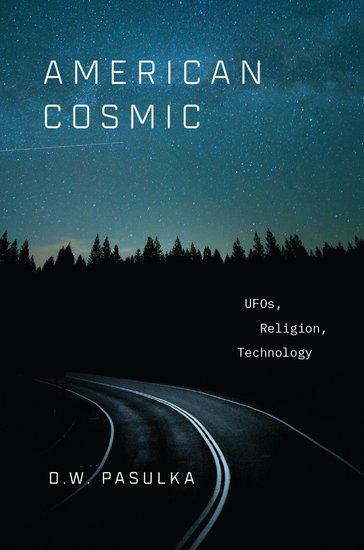
Wu Ming [trans. by Shaun Whiteside] Manituana (Verso, 2009): A collective of unknown communal Italian writers, writing a detailed and graphic re-depiction of the struggle for American Independence? Yeah. That’s a solid work. Bloodshed and peace treaties. Native Americans speaking three languages at once and others counting coup. Nothing delves into the meat of history better at times than a profound work of historical fiction. These folks are the crème de la crème. Or rather, la panna.. della panna.
Diana Walsh Pasulka American Cosmic: UFOs, Religion, and Technology (Oxford University Press, 2019): I don’t know, I haven’t read it yet. But to have an American philosopher write a work that references Immanuel Kant and the French scientist Jacques Vallée (played by Francois Truffaut in Close in Encounters of the Third Kind) in the same work seems like Summer Reading material to me. Now whether these materials are of terrestrial origin…. That’s a whole other question.
Audre Lorde Sister Outsider: Essays and Speeches (Crossing Press, reprint Edition 2007): An Afro-American Lesbian Feminist who sought to undue structures of self-hate and to restore a liberation politics of self-love and self-care seems as prescient and important today as when she first penned the work in 1984.
Rickey Gates Cross-Country: A 3,700 Mile Run to Explore Unseen America (Chronicle Books, 2020): American Quixotes don’t come around that often. Rickey Gates is a well-known trail-runner and as Quixotic as they come. In this beautiful work and struggle— wandering across the American landscape from the South Carolina coast to San Francisco Bay— he sought to commune with common people and ordinary life to wander and dream and confront his own delirium as he overcame heartache and dehydration in the Nevada desert.
Sylvain Tesson [trans. by Frank Wynne] The Art of Patience: Seeking the Snow Leopard in Tibet (Penguin Press, July 2021): Many have written about Tibet, only a true philosopher-poets knows how to turn the art of waiting into a lesson on stillness and wonder sitting in a frozen-desert landscape at 15,000 feet elevation, hallucinating mystical creatures at -20 celsius and partaking in the splendors of the void. Having thoroughly enjoyed reading this Prix Renaudot-winning work in French several years ago, this translation by Frank Wynne will be a generous poetic offering in sharing the work of a travel-writer and adventurer to a larger reading public.
Paul Fournel [trans. by Allan Stoekel] Need for the Bike (University of Nebraska Press, 2003): Fournel heralds from the poetic Oulipo group including the likes of Georges Perec and Jacques Roubaud. And while the Oulip group might need no introduction, Fournel is lesser known, however, and his wielding of words to express the art of taking up a quasi-mystical practice of cycling will serve any reader well both in the arts of poetry but also in how to truly live and experience the joys and suffering on what the French only refer to as “le vélo.”
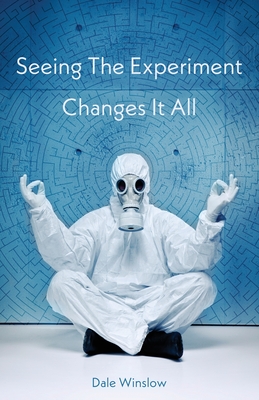
First and foremost, I would recommend the posthumously published first volume of writing by Christine Nystrom, entitled The Genes of Culture: Towards a Theory of Symbols, Meaning, and Media, edited by Carolyn Wiebe and Susan Maushart (Peter Lang, 2021). Nystrom was a colleague and collaborator of Neil Postman, and one of the foundational media ecology scholars of the late 20th century, her work focusing on language and symbolic communication, culture, and human relationships. Her work is absolutely brilliant, and at the same time highly accessible.
Second on my list is a very significant addition to philosophical thought regarding the human condition by Corey Anton, entitled How Non-Being Haunts Being: On Possibilities, Morality, and Death Acceptance (Fairleigh Dickinson UP, 2020). This insightful and wide ranging work incorporates rhetorical theory, psychology, systems theory, and phenomenology in a multidisciplinary tour de force.
A bit more down to earth, and relevant for educators and parents as well as scholars, is The Arts and Play as Educational Media in the Digital Age by Robert Albrecht and Carmine Tabone (Peter Lang, 2020). The need to step outside of our digital and electronically media environments, at least temporarily, has never been greater, and this book offers a practical guide and theoretical rationale for doing so.
Given the current state of things, we all could use a little help when it comes to financial investments, even for those of us whose funds do not extend beyond TIAA/CREF retirement accounts. For this reason, I am pleased to recommend Christopher Mayer’s How Do You Know? A Guide to Clear Thinking About Wall Street, Investing, and Life (Institute of General Semantics, 2021). Mayer not only provides sound and knowledgeable financial advice, but also a popular introduction to general semantics that can be applied to any human activity or concern.
Finally, what is life without a little poetry? Dale Winslow’s second collection of poems, Seeing the Experiment Changes It All (Neopoiesis Press, 2021) is an exciting and deeply meaningful volume that is perfect for those sunny summer days, and equally so for those cold winter nights.
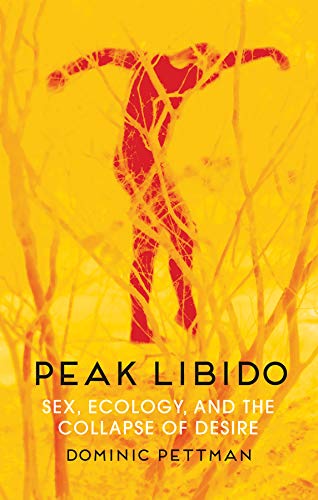
In past years, I could imagine the summer as some kind of a coherent thing. It was when I didn’t have to prep courses and grade papers all week. It was a time for being outside, for planning trips, maybe. Bit of a rest, bit of freedom. I understood what June was meant to feel like, and July, and August. I knew what kind of thing the summer was, because I felt like I understood what it wasn’t. There was a rhythm, and then a release, and a new rhythm to take its place. If you had asked me what I planned to read over the summer, in past years, I would have been able to tell you a story that I believed at the time.
This year, as I sit to write this, I can’t tell that story. It seems that these 1.25 years (and counting) of pandemic time have decomposed my sense of rhythm and normalcy such that I have no sense of what the summer is meant not to be, and thus I have no sense of summer. (My days, work, and internal weather are consistently inconsistent, are reliably unpredictable and irregular.) I’m in my house, still. I’m masking up even when it’s optional, still. I’m not sure where the summer is, as a time-space I’m reaching to inhabit. And still, I’m reading, and what I can tell you is what I’m swimming around with right now.
Always, the comic books. This is what I tend to read before bed, and right now that looks like all things Loki-related, anything by Jeff Lemire, the second part of Neil Gaiman’s Norse Mythology series (Dark Horse, 2021), Jupiter’s Legacy (Image, 2020) and Karmen, (Image, 2021), but that will explode out into a big colorful cloud as issues of other series that I follow are released over the summer. I just finished James Albon’s The Delicacy (Top Shelf, 2021), which I highly recommend for any comic lovers who enjoy reading and thinking about food.
And speaking of food, the pandemic has brought a change in where I get my groceries: more farm share home delivery is available where I live, now, and as the summer produce rolls in I’m spending more time working in my kitchen. The pandemic has also changed how I cook and read about food: I tend to read recipes not as guides to make particular dishes but as collections of lessons in how to process the materials I have at hand. I’m often in my kitchen these days, processing garlic scapes or turnips or rhubarb, dehydrating tomatoes or ramps, without a clear idea of what I’m ultimately going to do with them. Glass jars and bottles of powders and things are scattered across my counter and fridge shelves, and they’ll eventually find their way into various experiments. It’s a mad science lab in there. For inspiration, I’m currently reading in Magnus Nilsson’s Faviken: 4015 Days, Beginning to End (Phaidon, 2020), Nik Sharma’s The Flavor Equation (Chronicle, 2020) and Season (Chronicle, 2018), and Nick Balla and Cortney Burns’ Bar Tartine (Chronicle, 2014) for inspiration on magicking with the dehydrator, Niki Segnit’s books, and anything Melissa Clark or Ottolenghi for help with basics. I may wind up writing about this, as part of a kind of freaky wild hybrid housekeeping manual and collection of very short fictions. We’ll see.
Soon, I’ll be reading Linda Rui Feng‘s new novel Swimming Back to Trout River (Simon & Schuster, 2021) and Carrie Jenkins’ Victoria Sees It (Strange Light, 2021), and finishing Josh Berson’s The Human Scaffold (University of California Press, 2021) and Dominic Pettman’s Peak Libido (Polity, 2020): four recent books by brilliant scholar-friends whom I find endlessly inspiring. And I’ll be looking for new scifi, after recently enjoying Nino Cipri’s Finna (Tor.com, 2020) and Defekt (Tor.com, 2021), Rivers Solomon’s Sorrowland (MCD, 2021), and Tamsyn Muir’s first two books in The Locked Tomb Trilogy (Tor.com, 2020). I’ll be rereading George Saunders’ A Swim in a Pond in the Rain (Random House, 2021), Robert Hass’s A Little Book on Form (Ecco, 2018), and getting back into ghazals.
As a teacher I’ve fully embraced ungrading as part of my pedagogy for a couple of years, now, and I’m currently reading Susan Blum’s Ungrading (West Virginia University Press, 2020) with a collective of other women as we think together about how to refine an ungrading methodology in our classes.
And for a project I’m working on, I’m continuing to swim around in two ponds that are shaping my work at the moment: books on Tarot, Lenormand cards, and other forms of cartomancy; and books on paleobotany, invertebrate paleontology, and bog bodies. Rot and goddesses. Goddesses and rot. That’s my current jam.
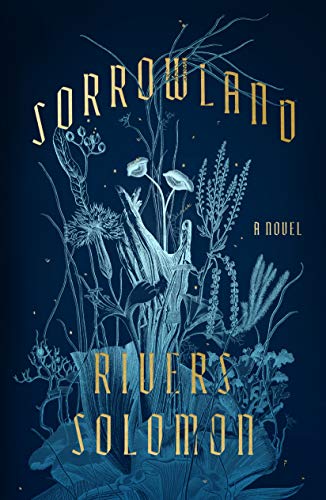
Rivers Solomon Sorrowland (MCD, 2021): This could be described as a gothic or magic realist novel, but it has the alienating feel of the best science fiction. Vern is a young albino Black woman, living alone with her twin babies in the woods, caught between the repressive Black nationalist commune from which she fled, and the racist terror that characterizes the larger American society. The novel is overwhelmingly harsh and distressing, but it also ultimately about resistance and overcoming. It is continually, astonishingly inventive, continually surprising the reader as it reaches from the tiniest details of sheer survival in the wilderness, through a cold look at American political and economic realities, and all the way through them to a hard-won cosmic perspective. Sorrowland is by far the most powerful work of speculative fiction that I have come across in a good while.
K. Allado-McDowell Pharmako-AI (Ignota Books, 2021): This book is a collaboration between its listed human author, and the software program GPT-3, the most advanced computer system yet devised for generating meaningful prose. The human author provides prompts, and the computer takes off from there, elaborating on the prompts, and occasionally changing its tack as the author gently intervenes. The focus, provided by the human author, is more or less New Age-y, with lots of talk about how we have to understand our position in the universe, about how we need to listen to the plants and other life forms surrounding us, about transcending self and language and creating “hyperspatial art,” and so on. I personally don’t find the subject matter all that interesting (though I would not necessarily want to argue against it, either). But the book is powerfully disturbing nonetheless, because it almost makes sense. Sentence by sentence, it is fairly lucid and rational in its own terms. At times, it veers in directions I can’t quite follow — but when this happens, it doesn’t feel like an aberration that I know how to characterize. It is not delirious or raving, nor is it dogmatic or overly closed off, nor is it avant-garde, nor is it nonsensical in a dadaist manner. Instead, it hovers just beyond meaning, suggesting a kind of alien sensibility that we cannot quite make contact with, or a sort of intelligence that somehow subsists even though we know that GPT-3 is not conscious or intentional, and that a different human interlocutor would lead it off in quite different directions.
Carl Neville Eminent Domain (Repeater, 2020): This is a near-future, alternative-reality novel. It takes place in a Great Britain where a successful revolution in the 1970s and 1980s not only defeated Margaret Thatcher, but eliminated capitalism altogether and sent the royal family and all its upper-class minions and enablers into permanent exile. The result is the People’s Republic of Britain (PRB), a semi-utopia where work is minimized and shared equally, ecologically sensitive policies are a matter of course, drug- and music-fueled hedonism is widespread, and most political decisions are managed through decentralized cybernetic networks. There is also a shady bureaucracy that hasn’t quite given up secret control, and a certain degree of menace from foreign enemies (especially the United States, whose President seems like an odd combination of Donald Trump, Elon Musk, and a GPT-3 style language processor). The novel manages the feat of showing off all the society’s hidden imperfections and problems, while at the same time convincing us that it is nonetheless far better than actually-existing conditions in the UK or anywhere else. You can neither scoff at this utopia as being impossibly perfect, nor cynically dismiss it as being as bad as what it replaced — and this is in itself an astonishing triumph of utopian writing. At the same time, it has a compelling plot, and it is narrated through a blend of voices and styles in a way that really conveys a sense of altered-for-the-better consciousness, without being overly arty or incomprehensible. (This novel is actually part of a diptych, alongside the parallel dystopian-UK vision of Resolution Way [Repeater, 2016]).
Nino Cipri Finna (Tor.com, 2020) and Defekt (Tor.com, 2021): These are two short narratives (novellas) set in the same science-fictional environment, one in which an Ikea-like chain of furniture stores has colonized the multiverse, and it is up to a small band of plucky employees not only to fight inter-dimensional monsters, but also to resist the humiliations and deprivations imposed upon them by management. Fast-paced, hilarious, and unapologetically queer. In short, these books are irresistible fun.
During the summer months, I am drawn to any work that involves the sea, beaches, or large bodies of water. Especially now that I live in land-locked Colorado.
Michael McDowell’s The Elementals (Valancourt Books, reprinted in 2014) includes some of my favorite elements: Victorian houses wasting away on the shore, a family mystery, and evil spirits. What more could you want?
Alma Katsu’s The Deep (G.P. Putnam’s Sons, 2020) is a historical fiction novel about the Titanic and its sister ship, the Britannic. Katsu blends a paranormal element into the book that makes it appeal to horror and history fans alike.
Shea Ernshaw’s The Wicked Deep (Simon & Schuster, 2018) tells the story of a coastal town haunted by three witches. Once a year, the witches try to lure teenage boys into the sea in order to exact their revenge. The book is technically a young adult read; however, I found it to be the perfect, light read for a summer day. Plus, witches!

Andrey Mir Postjournalism and the Death of Newspapers (independently published, 2020): Easily the best media theory book I’ve read in 40 years. I’m not as pessimistic as Mir, but his capacity to tie together the birth of newspapers and their reliance on advertising to the pummeling both are taking now by the screens of social media, and everything media in between, is brilliant, crucial, fascinating, and peerless.
Rob Sheffield Dreaming the Beatles (Dey Street, 2017): Just the best book on the Beatles ever written, teeming with insights that will surprise you, delight you, and confirm what you already knew in your heart of hearts.
Sergio Pistoi DNA Nation: How the Internet of Genes is Changing Your Life (Crux, 2019): Everything you need to know about how the marriage of DNA and social media is something to be prized and feared.
John Stith Pushback (Reanimus, 2018): A crackling, punch-in-the-face, vivid mystery by an underrated master of science fiction.
Elizabeth Hirst Distant Early Warning (Renaissance, 2021): This zombie novel has life, pizzazz, and soul. Somewhere between The Call of the Wild and The Walking Dead, and by no means either, but well worth your read.
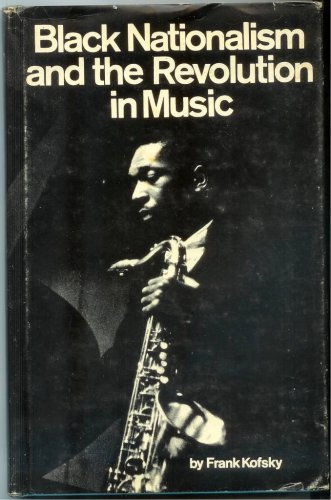
Isabel Wilkerson The Warmth of Other Suns: The Epic Story of America’s Great Migration (Random House, 2010): Between 1916 and 1970, nearly six million African Americans migrated to the North, West, and Midwestern states, many seeking industrialized work and the promise of a better life. Journalist Isabel Wilkerson tells the story of this monumental event and the complex social and political dynamics that surrounded it.
Frank Kofsky Black Nationalism and the Revolution in Music (Pathfinder Press, 1970): A classic study of Jazz in the 60s and its interrelationship with the Black freedom movement. Written from a Marxist perspective, Kofsky explores the ways in which music and culture intersect with race and capitalism.
Nathaniel Mackey Atet A.D. (City Lights, 2001): A beautiful, bizarre, and compelling novel about a working Jazz band. Atet A.D. not only captures the Blues-rooted emotional tone of the Black musical tradition its use of surrealistic imagery makes it a truly unique work of fiction.
Claude “Paradise” Gray and Giuseppe “u.net” Piptone No Half Steppin’: An Oral and Pictorial History of New York City Club the Latin Quarter and the Birth of Hip-Hop (WaxPoetics, 2017): As the booker for luminary Hip-Hop club, the Latin Quarter, and cofounder of X-Clan/The Blackwatch Movement, Paradise Grey is a key figure in our culture’s development. No Half Steppin’ tells a thrilling and informative history of the Latin Quarter and Hip-Hop’s golden era from the people who were there.
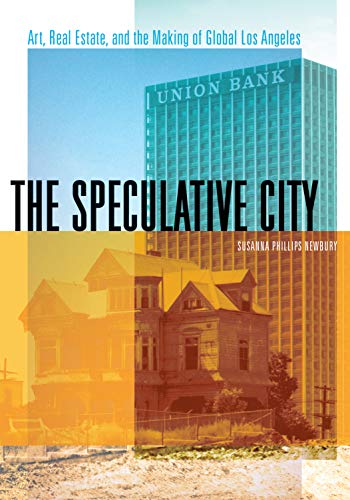
With City at the Edge of Forever: Los Angeles Reimagined (Viking, 2020) coming out in paper back in a few weeks, I’ve been trying to keep up with recent books on Southern California. Three that I’m looking forward to are: novelist Sesshu Foster and artist Arturo Ernesto Romo‘s ELADATL: A History of the East Los Angeles Dirigible Air Transport Lines (City Lights, 2021), a speculative tech rewriting of the Eastside; moving on to DTLA (as real estate types rebranded downtown) and the Westside, there’s Susanna Phillips Newbury’s The Speculative City: Art, Real Estate, and the Making of Global Los Angeles (University of Minnesota Press, 2021); and lastly, Ronald Brownstein’s revisiting of the city’s cultural imaginary across media in Rock Me on the Water: 1974, The Year Los Angeles Transformed Movies, Music, Television, and Politics (Harper, 2021).
Next year, I’m co-teaching a seminar and studio on environmentalism and social justice in Southern California, and one book that everyone has recommended to me as a way to get deeper into contemporary ecological thinking is Robin Wall Kimmerer’s Braiding Sweetgrass: Indigenous Wisdom, Scientific Knowledge, and the Teaching of Plants (Milkweed Editions, 2015).
Finally, because it sounds like a fundamental book to not just understand the present but to move into a better future, I’ve got a copy of Heather McGhee’s The Sum of Us: What Racism Costs Everyone and How We Can Prosper Together (One World, 2021).
Kate Crawford’s Atlas of AI: Power, Politics and the Planetary Cost of Artificial Intelligence (Yale University Press, 2021) is the result of 10 years of research into AI and its extractive political economy: a more cautionary and critical perspective on the utopian visions of AI and data industries in the early 21st century. Donald MacKenzie‘s sociology of finance research has influenced me: his latest book Trading At The Speed of Light: How Ultrafast Algorithms Are Transforming Financial Markets (Princeton University Press, 2021) is the best history yet of how high-frequency algorithms and firms have shaped online trading brokerages and indexes: a necessary counter to the 2021 frenzy in meme stocks, Reddit forums, and Robinhood trading apps. Hartmut Rosa’s Resonance: A Sociology of Our Relationship to the World (Polity Press, 2021) is one of the most detailed analyses of how we cope (or not) with a world defined by increased social acceleration and disconnection. Yuval Elmelech’s Wealth (Polity Press, 2020) details the microfoundations, macrofoundations, and the causal processes of wealth, financialization and intergenerational cumulative advantage, explaining how the 1% have benefited from economic inequality. Kean Birch and Fabian Muniesa‘s edited collection Assetization: Turning Things Into Assets in Technoscientific Capitalism (MIT Press, 2020) explains how assets can be capitalized and traded as a revenue stream: the intellectual property portfolio goal of today’s neoliberal universities.
Joe Henrich The Secret of Our Success (Princeton University Press, 2017): This is the interdisciplinary study of human cooperation that I called for in my 2005 TED talk.
Antonin Artaud (Trans. by Peter Valente and Cole Heinowitz) Succubations & Incubations: Selected Letters of Antonin Artaud (1945-1947) (Infinity Land Press, 2020): This selection of letters from Artaud’s consummate work, Suppôts et Suppliciations [Henchmen and Torturings] translated into English for the first time, provides a vivid, uniquely intimate view of Artaud’s final years. Translated by Peter Valente & Cole Heinowitz with an introduction by Jay Murphy and wonderfully illustrated by Martin Bladh and Karolina Urbaniak.
Yoko Ono and John Lennon John & Yoko/Plastic Ono Band (Thames & Hudson, 2020): The history of the Plastic Ono Band Ono-Lennon conceptual art project that ended up as two ‘solo’ music albums in 1970: one by Yoko Ono and and one by John Lennon. My review is up on Whitehot Magazine of Contemporary Art.
Blake Gopnik Warhol: A Life As Art (Ecco, 2020): An amazingly in-depth new biography of the life and work of Andy Warhol. My review has been published at Whitehot Magazine of Contemporary Art.
Julia Frey Venus Betrayed: The Private World of Édouard Vuillard (Reaktion Books, 2021): Fascinating detailed biography of French painter Édouard Vuillard. My full review has been published at Whitehot Magazine of Contemporary Art.
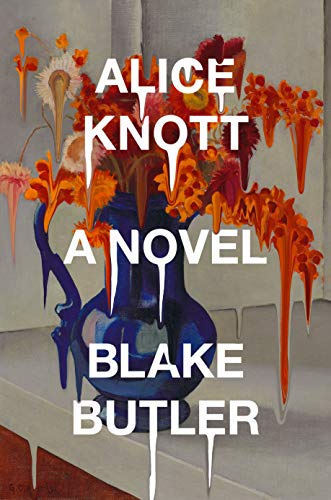
Blake Butler Alice Knott (Riverhead, 2020)
Jeff VanderMeer Hummingbird Salamander (MCD, 2021)
On September 29, 2020, reviewing Blake Butler’s stunning Alice Knott for the Atlanta Journal-Constitution, critic Jeff Calder made a somewhat startling correlation between Butler’s book and author Jeff VanderMeer. “What we do have is Butler’s ‘gnarl,’ so to speak, a location of puzzling quantum glitch where he and his contemporaries, like Annihilation author Jeff VanderMeer, allow themselves to flourish.”
Throwing the current Czar of the ‘Weird,’ or ‘New Weird’ – VanderMeer, in alongside the Heir Apparent of the ‘Experimental’ – Butler, was a risky gambit indeed. But it was also a remarkably astute observation.
Calder went on to note that: “In 1971, the critic George Steiner wrote, ‘We stand less on that shore of the unbounded which awed Newton, than amid tidal movements for which there is not even a theoretical model.’ In tomorrow’s fiction today, the uncertainty of such a model may, in fact, be the model. We don’t yet have a Theory of Everything to resolve discrepancies between the subatomic world and sidereal motion – you know, the bigger picture.”
Calder suggested that the realm where Butler and VanderMeer could meet was a form of literary Interzone: “This place is the forbidden mine of American letters, where our hands run along the phosphor seams of H.P. Lovecraft and… Thomas Pynchon; we guide ourselves to the surface, where, as Butler puts it, even the wind seems different.”
Both VanderMeer’s Hummingbird Salamander and Alice Knott are essentially ‘crime’ novels, but that’s where their similarities end. Hummingbird is an out-and-out riff on the detective genre, and it is also Vandermeer’s most mainstream novel to date. There is nary a hint of the ‘weird’ that Vandermeer has built his career on to date, and that lack strips the novel of the odd frisson that he has become renowned for. In that regard Hummingbird sits in sharp contrast with Vandermeer’s other ‘detective’ novel, the truly bizarre Finch from 2009 with its noir-ish talking mushrooms. Indeed, Hummingbird by contrast borders on the banal – it’s an out-an-out eco-thriller, a great beach read with only the briefest of hints of the imposing environmental Armageddon that Vandermeer usually wields with such force.
Alice Knott is also a great read, but in a very different way. Butler wants his readers to consume language like a drug, a psychedelic, hallucinatory drug that is not always palatable. It begins with an art theft of immense scale and then charts the increasing derangement of the arts patron whose work has been stolen. Alice is definitely for the brave of heart, a not always-easy narrative that rewards in multiples.
But Calder got something right when he suggested a literature of the ‘gnarl,’ and “a location of puzzling quantum glitch.” Although this doesn’t apply to Hummingbird, it did with Vandermeer’s Annihilation and it most certainly does with Butler’s Alice Knott. Whether they be ‘gnarl’ or ‘glitch,’ these are welcome literary mutations indeed.
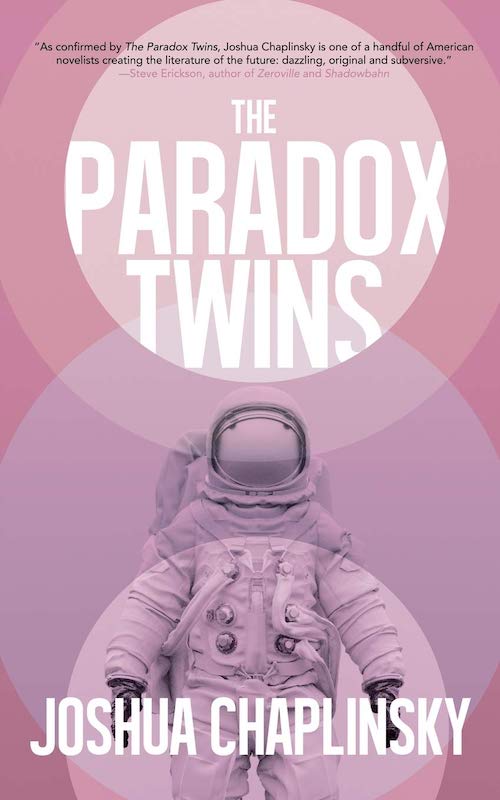
Roisin Kiberd The Disconnect: A Personal Journey Through the Internet (Serpent’s Tail, 2021): “What if I’m addicted to the medium, and not the message?” Roisin Kiberd asks in the last chapter of The Disconnect. She makes the point, accurate by all estimates, that the internet and all of its attendant technologies of wares both hard and soft were built by men, for men. Her book further proves that men are not the best critics of that technology. Ellen Ullman, Zizi Papacharissi, danah boyd, Alice Marwick, Annallee Newitz, Patricia Lockwood, Anna Weiner, and Kiberd herself, just to name a few, are our real guides. In addition, Kiberd’s writing is as personal as it is critical. You’re not likely to read about Jaron Lanier’s online-dating activities or Cal Newport’s energy-drink experiments in their books, but those internet-adjacent experiences—as well as many others—are all here in stark detail.
B.R. Yeager Negative Space (Apocalypse Party, 2020): This is fiction from some scary area that feels all too real. This is conjuring something from somewhere else and then having to confront it without proper weaponry Yeager’s storytelling style puts you right in the heads of most of the characters but keeps you out of some very important ones, thereby making some things intimately known while simultaneously increasing your exposure to the unknown. It’s all liminal, interstitial, awakening the latent evil in the cracks of the everyday.
Joshua Chaplinsky The Paradox Twins (Clash Books, 2020): Three books in one, The Paradox Twins tells the story of a family fraught like any other, paralyzed by paradox, and weighed down by legacy. Chaplinsky’s allusions to the many films of Stanley Kubrick, especially 2001: A Space Odyssey (1968), are subtle at times, over-the-top at others, yet always perfectly suited for the scene and story.
Lauren Beukes Afterland (Mulholland Books, 2020): In Afterland‘s post-apocalyptic world, the men are all but gone. Before you decide that Lauren Beukes has found the key to utopia, there are plenty of problems. For one, virus-induced, post-apocalyptic tribalism leads to an overnight state of complete anomie. It’s as if Children of Men were Children of Women, but with Beukes’ unique style and ample abilities, it’s so much more than that.
Terry Miles Rabbits (Del Rey, 2021): A few years ago, as I was on a Blue Line train on my way to Midway in Chicago, I was reading Tade Thompson’s Rosewater (Apex, 2016) and listening to Hole’s Celebrity Skin (DGC, 1998). At the exact moment that I read the phrase “all dressed in white” on page 57 of Rosewater, Courtney Love sang the same phrase in my ears on the song “Use Once & Destroy.” A few months later, I was clearing some records off my iPod to add a few new things, including the newly released Jay-Z record, 4:44 (Roc Nation, 2017). When I finally stopped deleting files and checked the available space, it was 444 MB. A few minutes later, while reading the latest Thrasher Magazine (July 2017), I happened to notice the issue number: 444. Welcome to Rabbits, a book about a game of synchronicities and discrepancies. Jumping tracks on the train of meanings behind things, it’s a wild ride to the end of the world. You might already be playing the next iteration.
I marshal the middle between Mathers and McLuhan.
Editor of Boogie Down Predictions (Strange Attractor, 2022), author of Dead Precedents (Repeater, 2019) and The Medium Picture (UGA Press, 2025), among others.
